In a world where “think inside the box” is suddenly a design philosophy rather than a dusty old adage, DIY container homes have people buzzing like bees around a metallic hive. They’re popping up faster than dandelions in springtime, and it seems like everyone and their dog wants to get in on the trend. Cutting a swath through traditional housing markets, these steel abodes have stomped their hefty, rectangular footprints into the hearts of tiny-home aficionados and full-sized families alike.
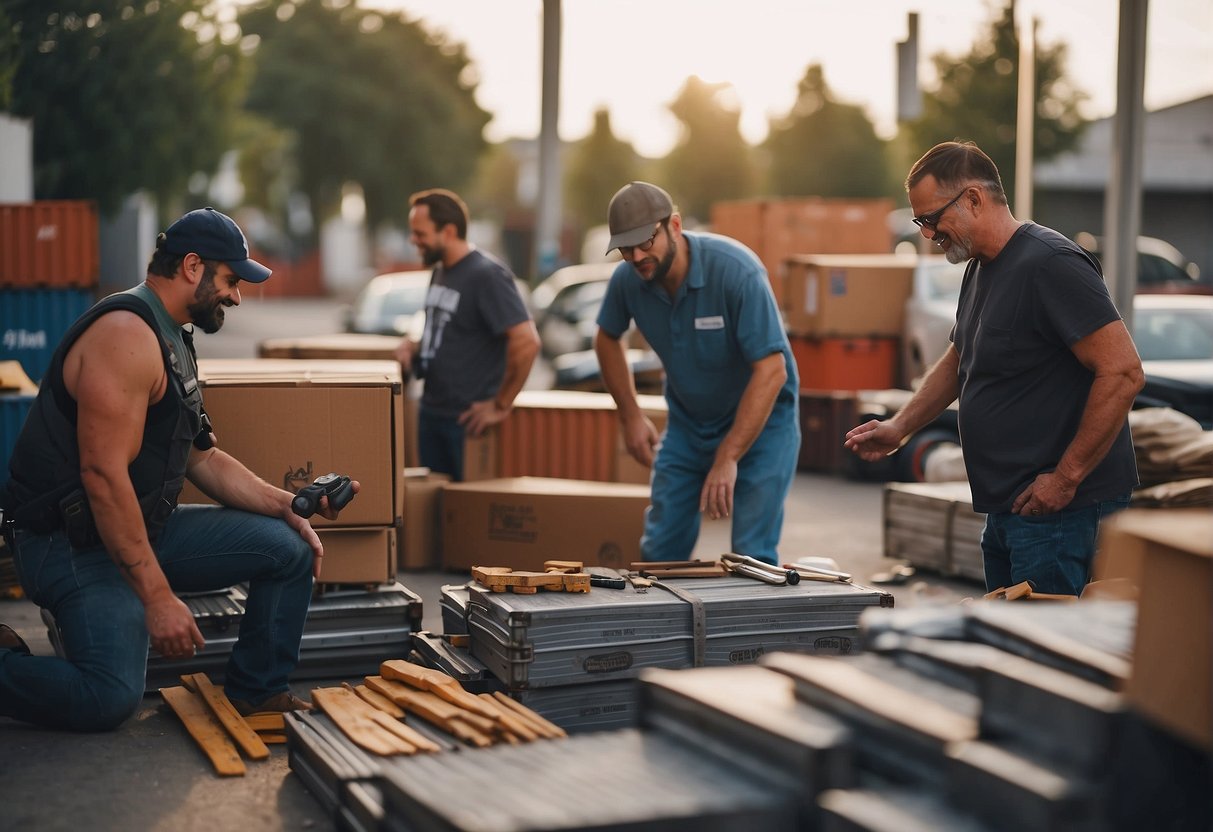
Crafty individuals are transforming these cargo carriers into living spaces that range from the charmingly rustic to the downright luxurious. Beyond just being a cost-effective housing solution, they are a playground for the modern DIY-er, eager to wield power tools in pursuit of architectural glory. Shipping containers are not just for shipping anymore; they’re the building blocks for innovative homes that give a whole new meaning to getting ‘carried away’ with your building project.
Curiosity is piqued, hammers are swinging, and container home workshops have more enthusiastic attendees than a free pancake breakfast. Whether it’s a blueprint from a noted Cargotecture design firm or a do-it-yourselfer gushing about the joys of living in a steel rectangle, the stories of triumph and the occasional tale of a mis-measured window space are sparking imaginations. The blend of sustainability, economy, and challenge is too tempting to resist, and with many successfully building their own steel sanctuaries, the fad shows no signs of rusting away.
Rise of the DIY Container Home Movement
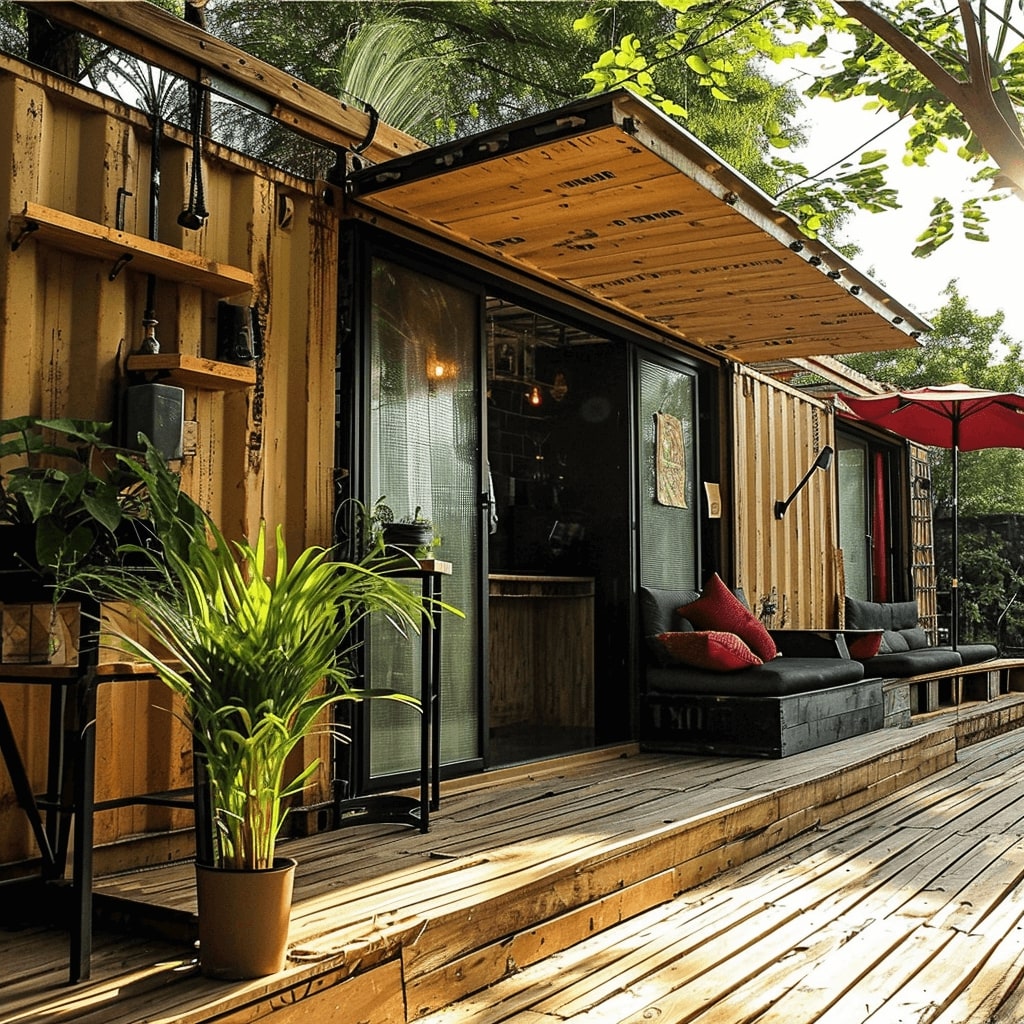
In a world where “thinking inside the box” can actually pay off, DIYers are transforming simple shipping containers into sleek, customizable homes. Let’s unpack the phenomenon.
Historical Context: From Ports to Properties
Originally just big steel rectangles hoarding goods at bustling ports, these containers have traded their sea legs for foundations. Thrifty builders have turned these metal boxes into trendy abodes, proving that with a little creativity, the journey from cargo carrier to cozy home is just a few power tools away. The trend took off as people discovered that these containers could be both an affordable and quick-to-assemble housing option.
Eco-Friendly and Sustainable Living
Hugging trees without actually hugging trees—that’s the vibe of container homes. By reusing these steel giants, DIY masters are reducing waste and minimizing their carbon footprints, one container at a time. It’s like giving the planet a high-five with every wall you weld. Sustainability isn’t just a buzzword for these folks; it’s literally built into their homes, with many focusing on eco-friendly add-ons like solar panels and rainwater harvesting systems.
The Allure of Tiny Home Living and Minimalism
Bidding adieu to clutter, DIY container home enthusiasts are embracing minimalist living without sacrificing style. Many find joy in designing their compact castles, celebrating the design preference for sleek lines and tiny house resourcefulness. It’s the art of living with less, proving that “tiny” doesn’t mean “cramped”—it means “ingenuity per square foot.”
Crafting Your Dream Home
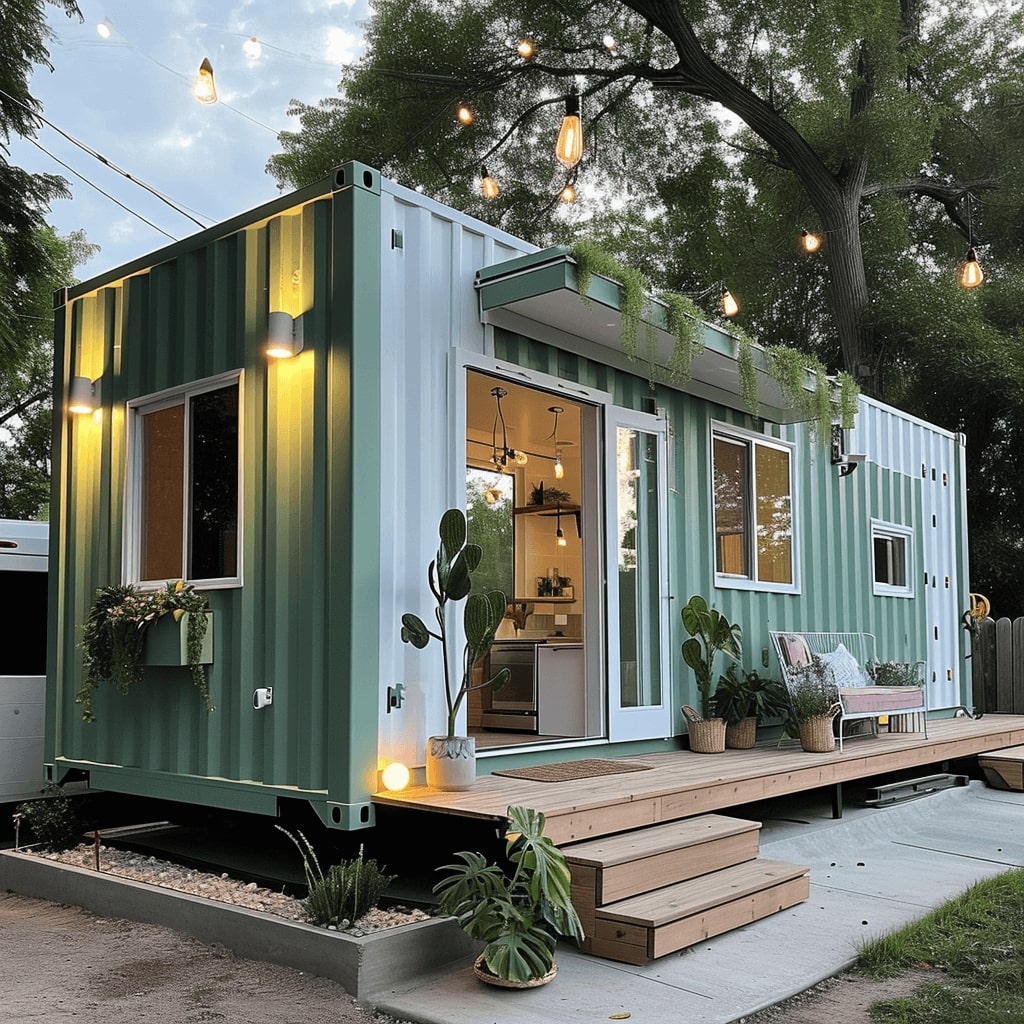
One might think crafting a dream home from steel boxes is a scene from a quirky architect’s daydream, but DIY container homes are shaping abodes and aspirations across the globe. Let’s dissect this steel phenomenon.
Designing with Vision and Versatility
They say a container home’s design is limited only by one’s imagination—and perhaps local zoning laws. Homebuilders with a vision of sustainable living craft their dream homes using the corrugated skins of shipping containers. Versatile and robust, these containers can be stacked to create multi-story mansions or sliced to form cozy cabins. One imaginative soul used the steel boxes to conceive a home with secret rooms—proving that container homes are more than just a place to stash your stuff.
From One Container to a Modular Mansion
Starting with a single container, which one can snag for less than the price of a used sedan, they piece together their living space like a game of Tetris. A modular approach allows for adding on extra rooms as in-laws or hobbies expand. Sally stacked three containers and transformed them into a stellar three-bedroom retreat, redefining the term “moving house.”
Adding Personal Touches: Windows, Doors, and Décor
One doesn’t just slice holes for windows and doors and call it a day. No, they take their metal abode from drab to fab with a few swings of the sledgehammer for picture windows and sliding glass doors. Bob decided that portholes were more his style, lining the walls of his home with circular openings for a nautical nod. Chuckle as you will, but his décor can weather any storm.
Navigating the Nitty-Gritty Details
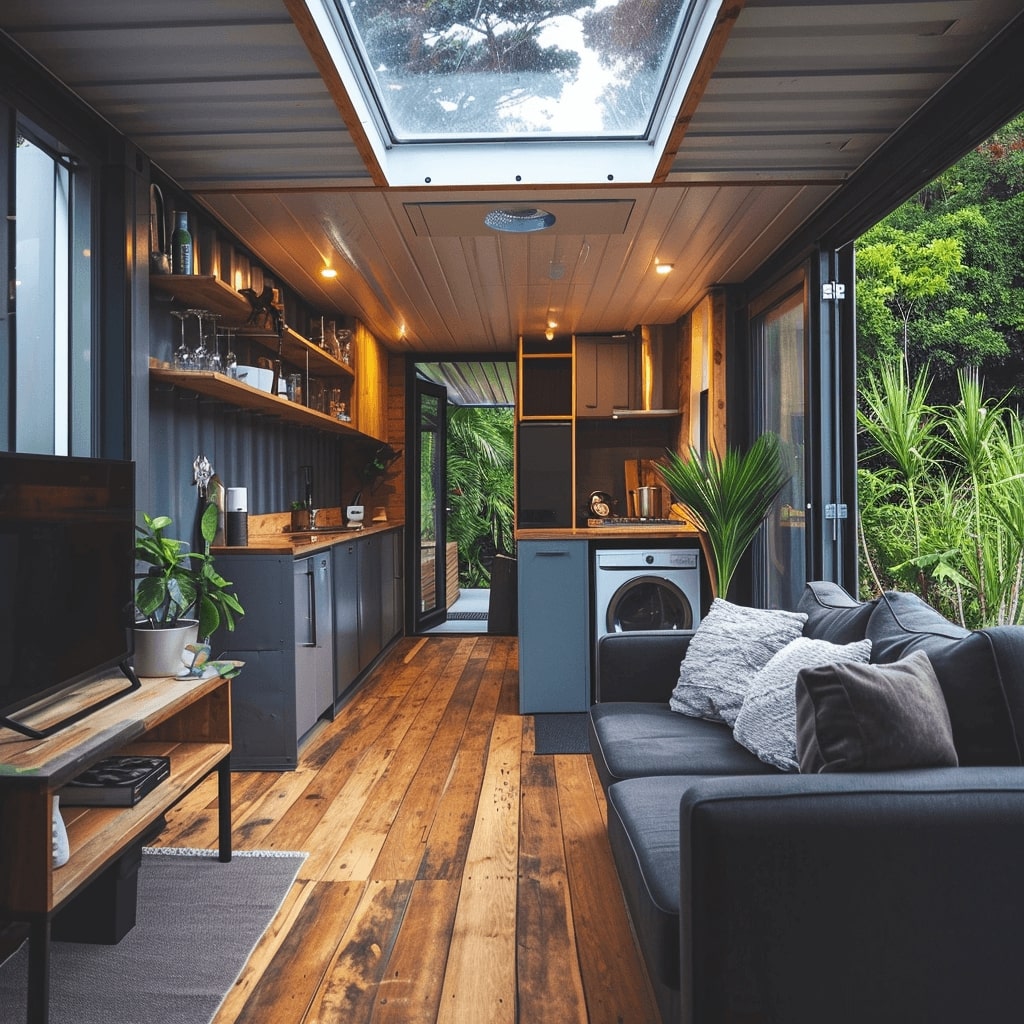
When one leaps into the DIY container home trend, they must wrangle with more than just stubborn bolts and screws; there’s a plethora of legal tape to tango with and logistical conundrums to wrap their head around.
Securing Permits and Dealing with Zoning Laws
First and foremost, they can’t just plop a giant metal box on a piece of land and call it home. No, no, they need to cozy up to the local zoning laws and charm the pants off of various permit requirements. It’s a delightful dance of paperwork where one wrong step can land you on the neighbor’s petunias—figuratively speaking, of course.
- Checklist for Permit Acquisition:
- Flirt with the local zoning bylaws to ensure container homes are allowed
- Make winking eye contact with building codes to match your home’s standards
- Secure a date with all necessary permit applications and seduce them thoroughly
The Foundation of It All: Location and Setting up a Solid Base
Choosing a location is like playing real estate matchmaker—finding that one spot that makes your container heart go ‘thump.’ And then, there’s the task of laying down a foundation that’s as solid as a rock.
- Location Selection Criteria:
- Terrain compatibility with your container’s bottom
- Access to essential services like roads (unless hermitage is the aim)
- Bonus for picturesque sunrise views (not mandatory but a plus!)
Utilities and Services: Plumbing the Depths
Utilities are the lifeblood of any domicile. For container homes, setting up plumbing and electrical systems is like performing open-heart surgery with a spatula—delicate and requiring finesse. They need to navigate the jungles of local utility regulations to ensure that water flows and the lights flicker on.
- Utilities Setup Checklist:
- Create a map of where the water and wires will wander through your container
- Court all relevant utility provision services; they need to fall in love with your home project
- Establish a bond with a trusty toolbox for inevitable midnight plumbing escapades
The Budgeting Blueprint
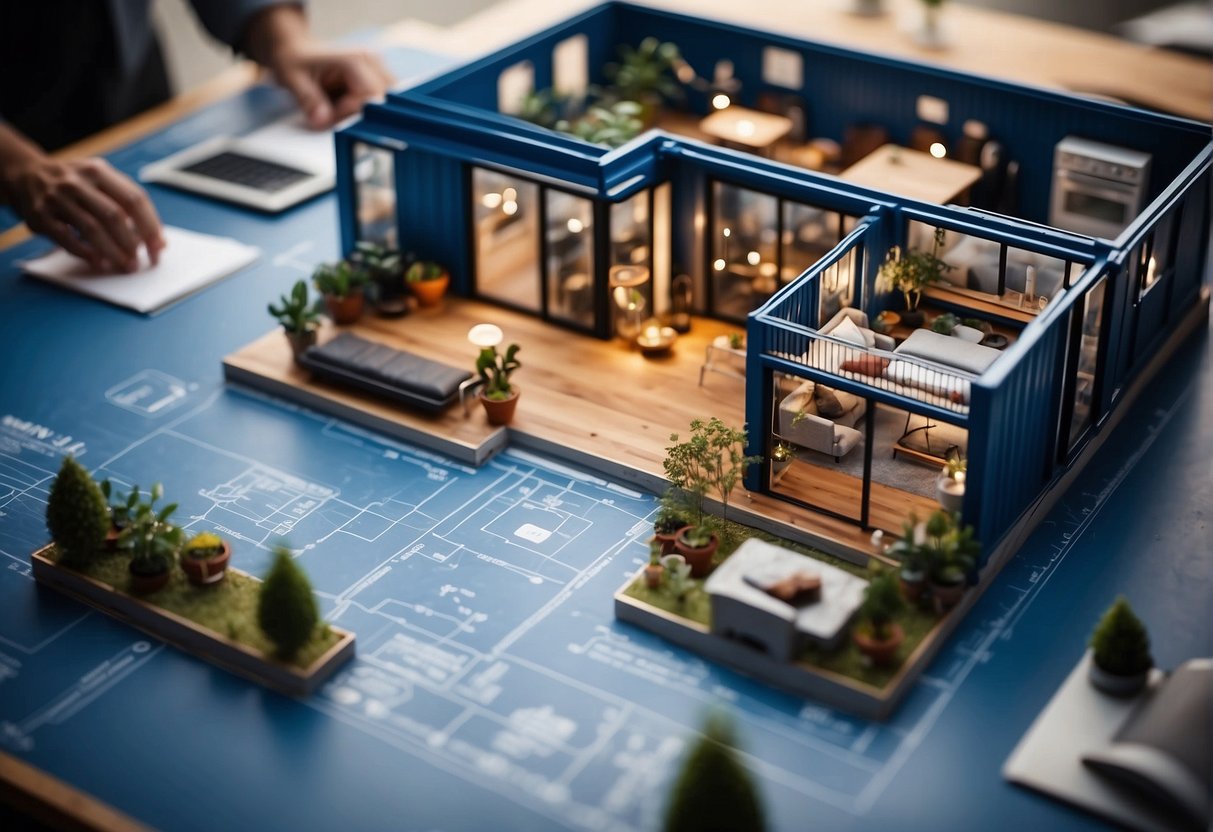
Embarking on a DIY container home project is less about finding a pot of gold at the end of a rainbow and more about meticulous planning and shrewd budget management. This section guides the penny-pinching builder through the economic labyrinth of container home creation.
Cost Considerations: Keeping Your Wallet Happy
He who fails to plan, plans to pay through the nose—or so the saying should go for DIY container home builders. Budgeting isn’t glamorous, but it’s the financial life vest that keeps heads above water. Here’s a snippet of wisdom: the average cost per square foot for shipping container homes ranges from $150 to $350. The not-so-secret sauce to keeping costs predictable includes planning for:
- Buying Containers: Whether one enjoys the allure of pre-owned charm or the sheen of newness, used containers can range from $1,500 to $4,500, while spanking new or customized ones may fall between $3,000 and $7,500 each.
- Foundation and Structural Mods: Pouring a foundation without pouring all your savings requires frugality. Factor in rust treatment and cutting openings with laser precision—financially speaking.
- Insulation and Interiors: Like a bear in hibernation, a container home needs its layer of insulation to stay cozy. Those drywall dreams and hardwood floors? They’ll need cash too.
Sourcing Materials and the Art of Scavenging
For the crafty cost-cutter, “reduce, reuse, recycle” isn’t just an environmental mantra—it’s a shopping list. It’s about embracing the DIY shipping container home spirit and hunting for bargains like a modern-day treasure seeker. Scavenging for deals and discounts can trim the fat off expenses, turning the project from ‘wallet-weeping’ to ‘wallet-whispering’.
- Repurposed Materials: Think outside the container. The local salvage yard or habitat store may offer windows that have seen sights but still let light in beautifully.
- Bartering Skills: Maybe the neighborhood electrician needs a website, and you’re a closet coding ninja. Swap those HTML skills for some watts and wires.
Investment and Long-Term Value
They say you’ve got to spend money to make money, but when it comes to DIY container homes, you’ve got to spend money wisely to hope to not cry about it later. These steadfast steel boxes are more than just living spaces—they’re an investment in the future. Ensuring a cozy nest for retirement or a quirky rental could see these quirky abodes appreciate over time, much like a fine wine.
- Resale and Rental Prospects: An edgy container home can be catnip for the right buyer. If one builds in a desirable location, they may sell their trendy box home faster than hipsters flock to a viral coffee shop.
- Sustainability Brownie Points: Eco-friendly homes are all the rage. Solar panels? Rainwater harvesting? These additions could raise the value faster than one can say, “Save the planet and my wallet!”
Tales of Container Home Pioneers
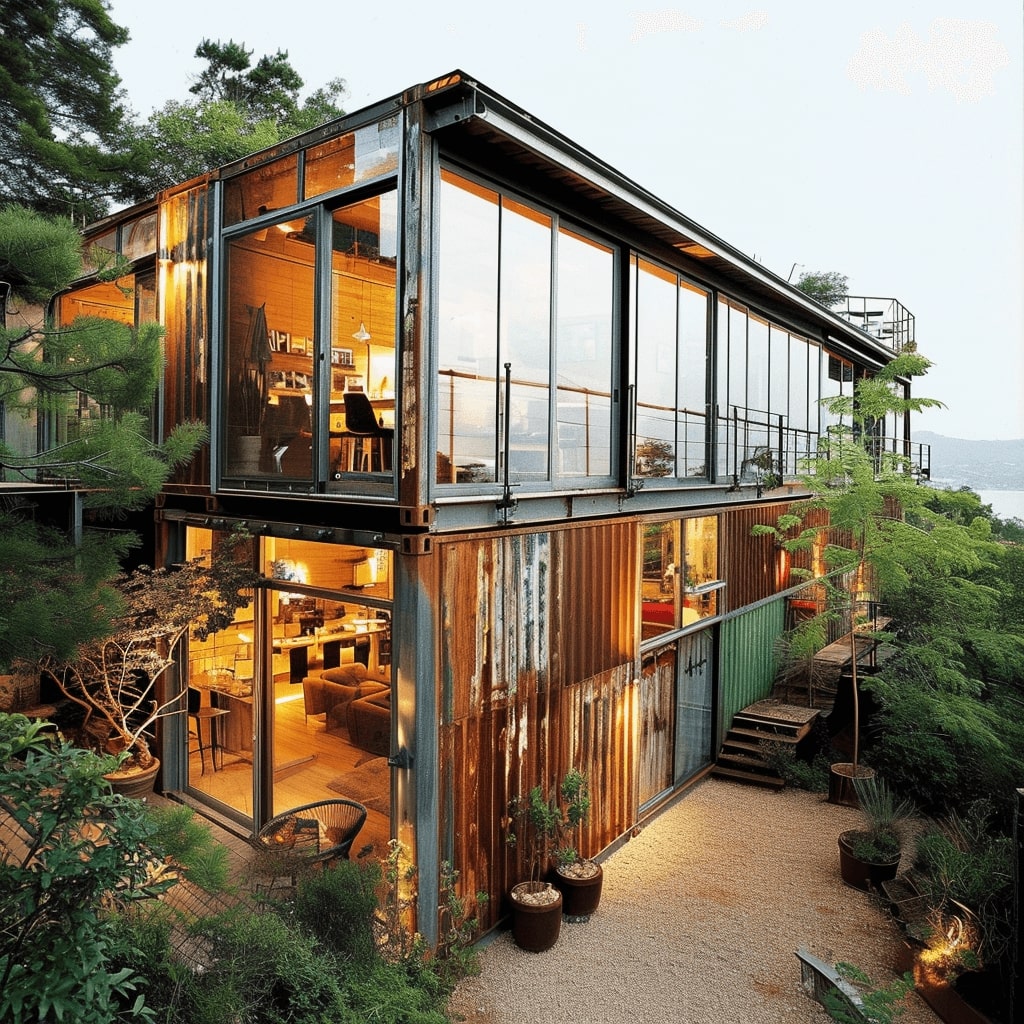
Every now and then, an idea comes along that’s so ingeniously economical it turns traditional housing on its head. This is the case with the DIY shipping container home movement, where adventurers and penny pinchers alike have transformed stark steel boxes into cozy, quirky abodes.
Success Stories and Stellar Spaces
They say a man’s home is his castle, but for some, it’s a shipping container—or several. Take Jake and Sienna: their DIY container home stands as a testament to the fact that with a bit of elbow grease and a flare for design, you can carve out a stellar space for under $10K. They turned a cold, corrugated steel shell into a warm, wood-paneled haven complete with a rooftop deck for stargazing.
Listed below are some of the spaces that these pioneers have created:
- Eco-friendly Escape: A solar-paneled container home nestled in the woods.
- Minimalist Retreat: A single-container abode featuring a pull-down Murphy bed.
- Modular Mansion: Multi-container setup built like Lego blocks for growing families.
Lessons Learned and Challenges Conquered
Embarking on a DIY project of this magnitude isn’t without its headaches, which can range from zoning laws that are as tough as a two-dollar steak to the eternal quest for the elusive straight and square container. Builders, often individuals with more enthusiasm than experience, have shared stories of their trials by forklift and triumphs with a welding torch.
Challenges they faced include:
- Navigating Bureaucracy: Acquiring the proper permits can sometimes feel like wrestling an octopus.
- Insulation Frustrations: Battling condensation without turning your home into an oven.
- Space Maximization: Learning to fit your life into a cleverly compact space without the need to adopt a hobbit-sized lifestyle.
Through sheer perseverance and a dash of creativity, these folks have not only conquered these challenges but also paved the way for amateurs to become seasoned professionals in the art of container home construction. Their stories serve as a beacon for the wannabe container dweller, proving that one person’s retired shipping container is another’s dream DIY home.
Technical Twists and Tweaks
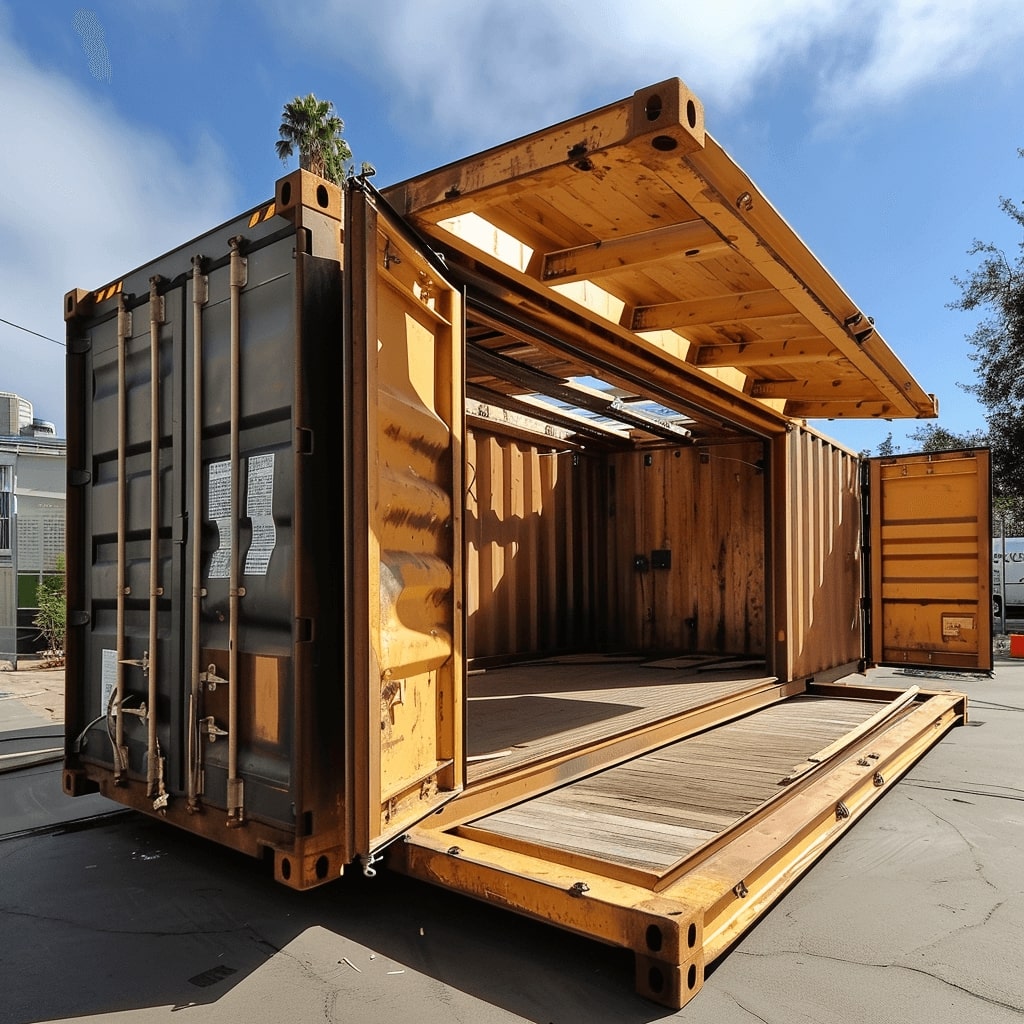
Crafting a DIY container home isn’t just about stacking metal boxes; it’s a cunning game of Tetris where one must fit all the comforts of a traditional home into a steel puzzle. From cozying up the place with top-notch insulation to figuring out how to not blow a fuse when you eagerly flip on all your gadgets, here’s what the savvy builders are tweaking.
Wrestling with Insulation and Energy Efficiency
One might think that a giant metal box could get a tad chilly or turn into a sauna, and they’d be spot on. Insulation is the hero in the DIY container home universe, critical for fending off condensation and ensuring year-round comfort. Some have concocted clever insulation strategies like the spray-foam snug hug, while others go full mad scientist incorporating sustainable materials like sheep’s wool. But it’s not just about warmth; energy efficiency enters the arena with solar panels sporting their shiny glare, turning the humble container home into an electricity-sipping introvert.
Modern Amenities: Dialing in the HVAC and Appliances
Now, let’s talk gadgets and gizmos: a comfortable home requires more than good insulation; it includes HVAC systems that won’t give out when you most need them. The high-tech HVAC ninjas integrate seamlessly within these steel sanctuaries, offering a whisper-quiet serenade of cool air in the swelter of summer. Adding modern appliances to the mix while avoiding an electrician’s worst nightmare—circuit overload—is like fitting olives on a toothpick; it’s a balancing act between power and functionality.
The Great Outdoors: Roof Decks and Green Spaces
And who can forget the crowning glory of many a container home: the roof deck? This is where DIYers go all out, turning rusty, corrugated crowns into lush green spaces or party-ready patios. They must grapple with the elements, warding off rust with a vengeance and engineering decks strong enough to host a small soiree or to simply star gaze in solitude. These sky-high retreats redefine the great outdoors, making nature’s vastness feel like it’s truly part of the living space.
Transforming shipping containers into livable abodes means playing a savvy game of operation that tests one’s skills at every turn, yet those who succeed, bask in the glory of sustainable and customized comfort—crafter style!
Do It Yourself or Hire Help?
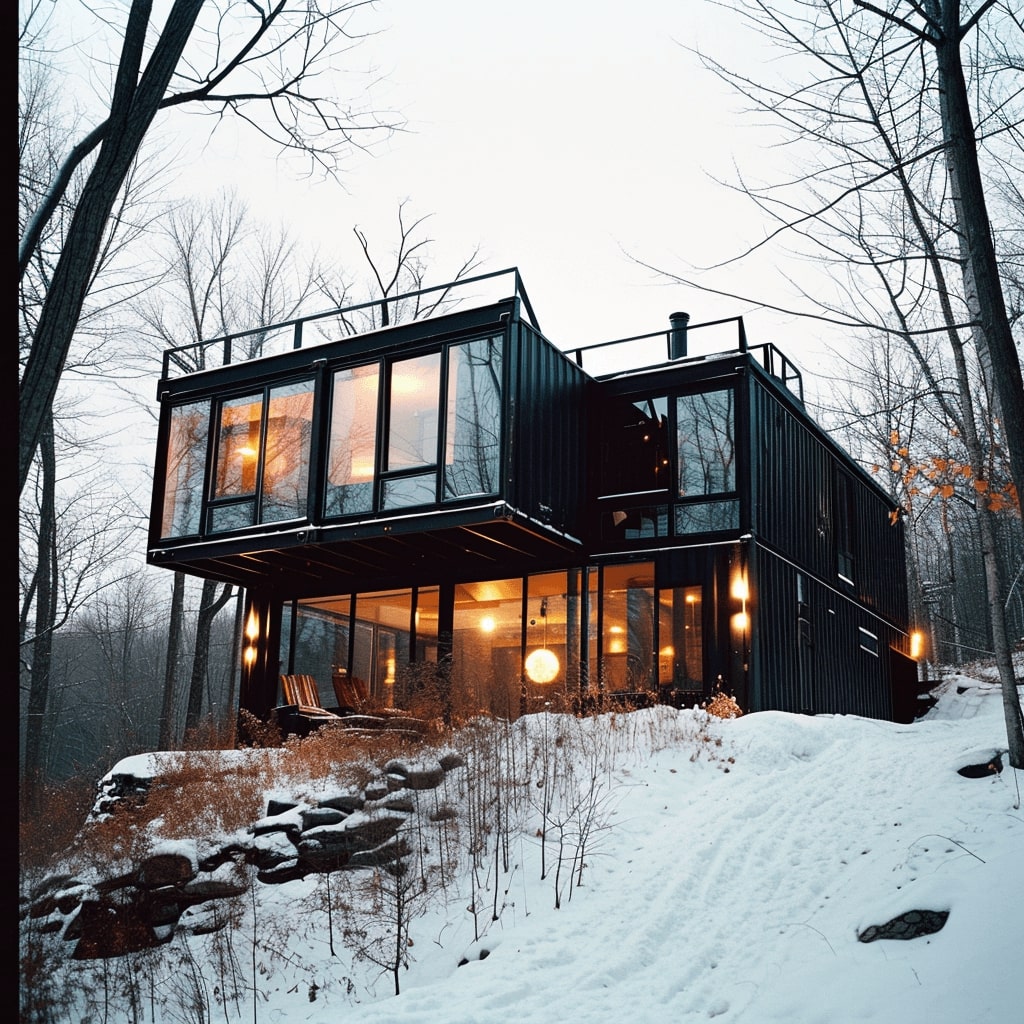
Decisions, decisions… When it comes to container homes, one faces the DIY versus hiring dilemma. Is one ready to wield a hammer, or is it wiser to hand it to someone who actually knows where to hit?
The Eternal Struggle: DIY vs. Professional Contractors
DIY Route: Those with a penchant for adventure (and perhaps a high tolerance for YouTube tutorial marathons) might lean towards the DIY method. It’s a chance to break a sweat, make countless trips to the hardware store, and bask in the glory of “I built this!” But remember, building a DIY container home is not for the faint of heart or those who perceive instructions as “more what you’d call ‘guidelines’ than actual rules.”
Beware:
- Mistakes: They’re more than just happy little accidents when it comes to construction.
- Tools: One may discover a newfound respect for the phrase “right tool for the job.”
Hiring Contractors: Sure, one could hire contractors, but prepare for the dance of quotes and timelines. These professionals may bring strength and expertise to the table, but they also bring invoices.
- Communication: It’s key unless one enjoys surprise walls.
- Budget: Remember to keep one eye on the contractors and one on the budget.
When to Consult Architects, Designers, and Experts
It might be tempting to think of architects and designers as those mythical beings who wave magic wands over floor plans, but their input is pretty grounded in reality. When one’s container home dreams start looking a touch more “sketchy” than “sketch-up,” it’s time to consult the experts.
Architects:
- They transform “seems like a good idea” into structurally sound sanctuaries.
- Who needs harmony in life when one can have it in the living space?
Designers:
- No, not for choosing shades of beige, but for space maximization that would make a minimalist weep.
- They could make living in a box look chic—literally.
Enlisting professionals doesn’t have to mean surrendering the reins; it’s more like admitting that maybe, just maybe, teaming up with smart people can transform one’s mishmash of ideas into a bona fide home.
Alternative Uses for Container Wonders
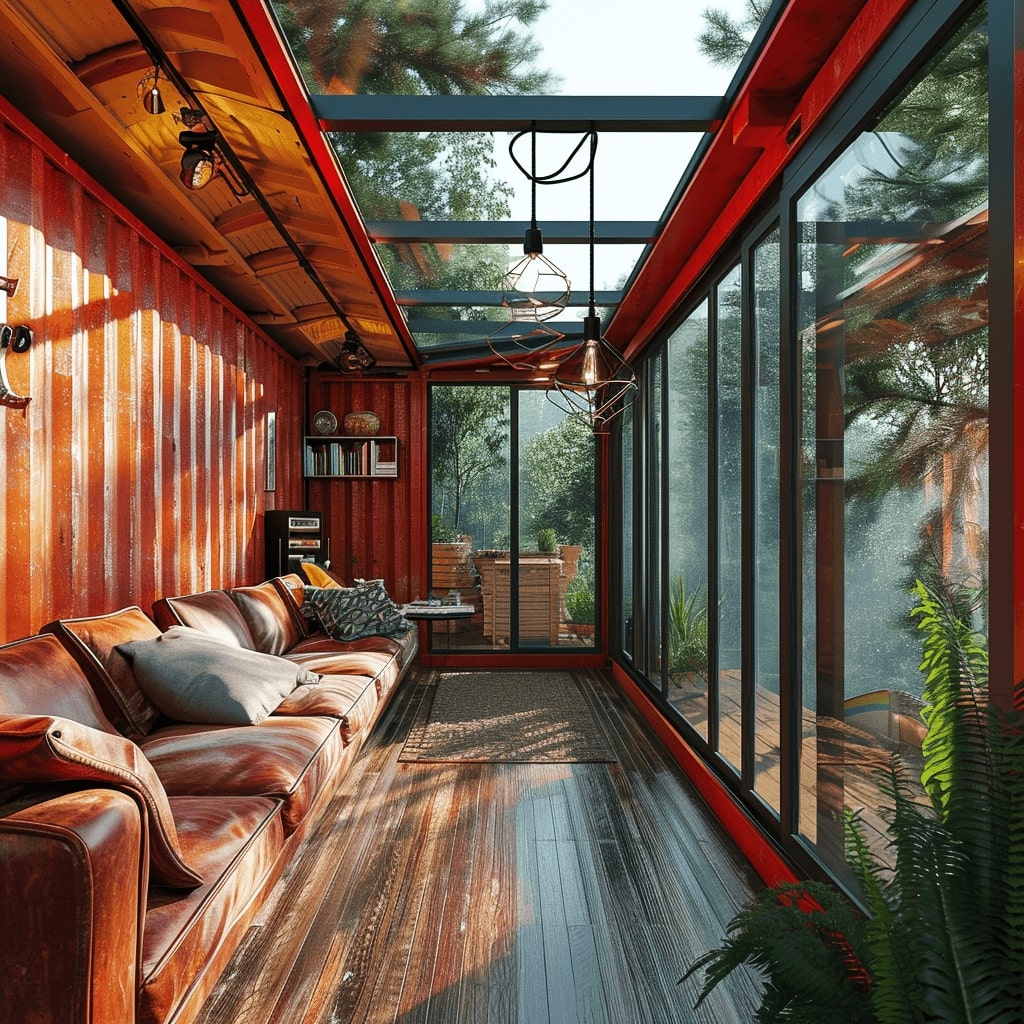
Think outside the (metal) box, because these corrugated steel marvels are serving up versatility on a silver platter. From chic to unique, shipping containers are getting repurposed faster than your aunt can say “upcycling.”
Not Just Homes: Offices, Pop-Ups, and Airbnb
Offices are popping up in these modular cubes, giving the term “boxy cubicle” a whole new, eco-chic vibe. Container workspaces sprinkle the environment with a touch of sustainable spice and offer a budget-friendly alternative to traditional building materials. When it’s not about crunching numbers, these containers moonlight as trendy Airbnb spots. Imagine cashing in on rent-a-room revenue with a side of quirkiness – a haven for travelers looking for more “bang for their buck.”
- Offices: Out-of-the-box thinking for in-the-box working.
- Pop-Up Shops: Limited time, unlimited style.
- Airbnb Rentals: Ditch the drab hotel for a stay in a steel cocoon.
Creative Spaces: Studios, Workshops, and Art Galleries
Smack dab in the middle of practical and whimsical, shipping containers are an artist’s dream canvas. Spacious enough to swing a cat and sturdy enough to handle a wild hare of an idea, they become studios or workshops where mess meets masterpiece. For the art connoisseurs, these versatile metal giants transform into walk-in art galleries, showcasing everything from avant-garde sculptures to paintings that make you tilt your head and go, “Huh.”
- Studios: Industrial chic meets messy hands.
- Workshops: Where ‘DIY’ is the buzzword, and sawdust is the glitter.
- Art Galleries: Bold, steel frames for even bolder expressions of art.
And there you have it – who knew those stoic rectangles could play so many roles? They’re like the Swiss Army knives of the repurposed container world.
Wrapping It Up: The Big Takeaway
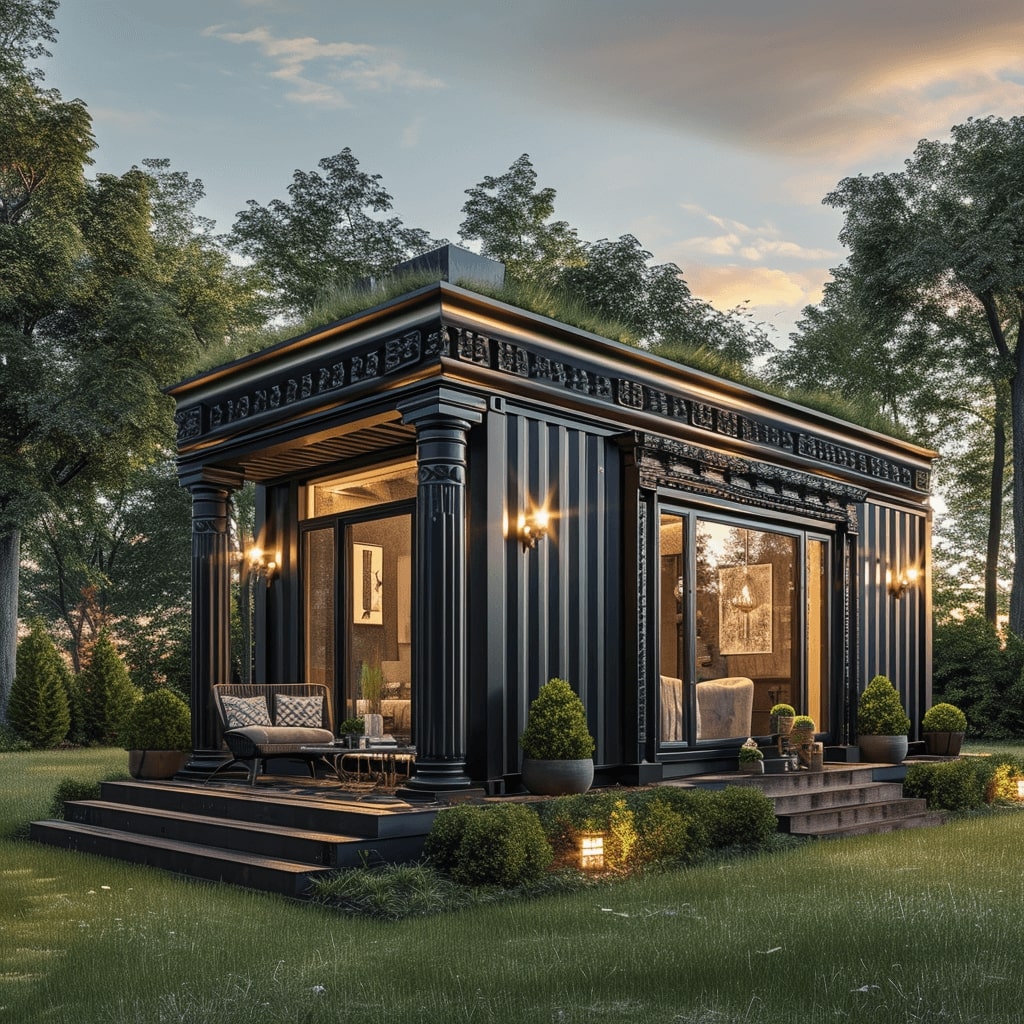
DIY container homes are like the Swiss Army knives of the housing world—they’re compact, versatile, and you can take them just about anywhere. People with a knack for wielding a hammer without whacking their thumbs are turning these steel boxes into affordable housing solutions. They challenge traditional house norms with their modern style, giving a whole new meaning to “thinking inside the box.”
Key Points:
- Alternative Living: These homes are as unconventional as pineapple on pizza, but just like the controversial topping, they have a devoted following.
- Mobility: They can move faster than your friend claiming the last slice of cake, offering the freedom to plant roots wherever you park.
- Environmentally Conscious: They’re greener than a salad at a hipster cafe, repurposing materials and often using less energy.
- Natural Disaster Rough n’ Tough: Like a superhero’s shield, container homes can withstand harsh elements better than your average domicile.
- Local Regulations: They navigate building codes like a minivan in a maze, sometimes tricky but doable with the right directions.
Anyone looking at their bank account and weeping at the thought of mortgage payments for a traditional home might chuckle at the thought of a container home. They’re the rebels of residence, the mavericks of modern living spaces. Who knew that what was once just a cozy home for cargo could now be your very own abode? Turns out, when life gives you containers, make a container home! And if you can thread a needle without requiring minor surgery, joining the DIY container home movement might just be your cup of tea.
Just remember, while the DIY road can be less traveled, it’s often lined with a cheering squad of fellow thrifty, creative home builders.





